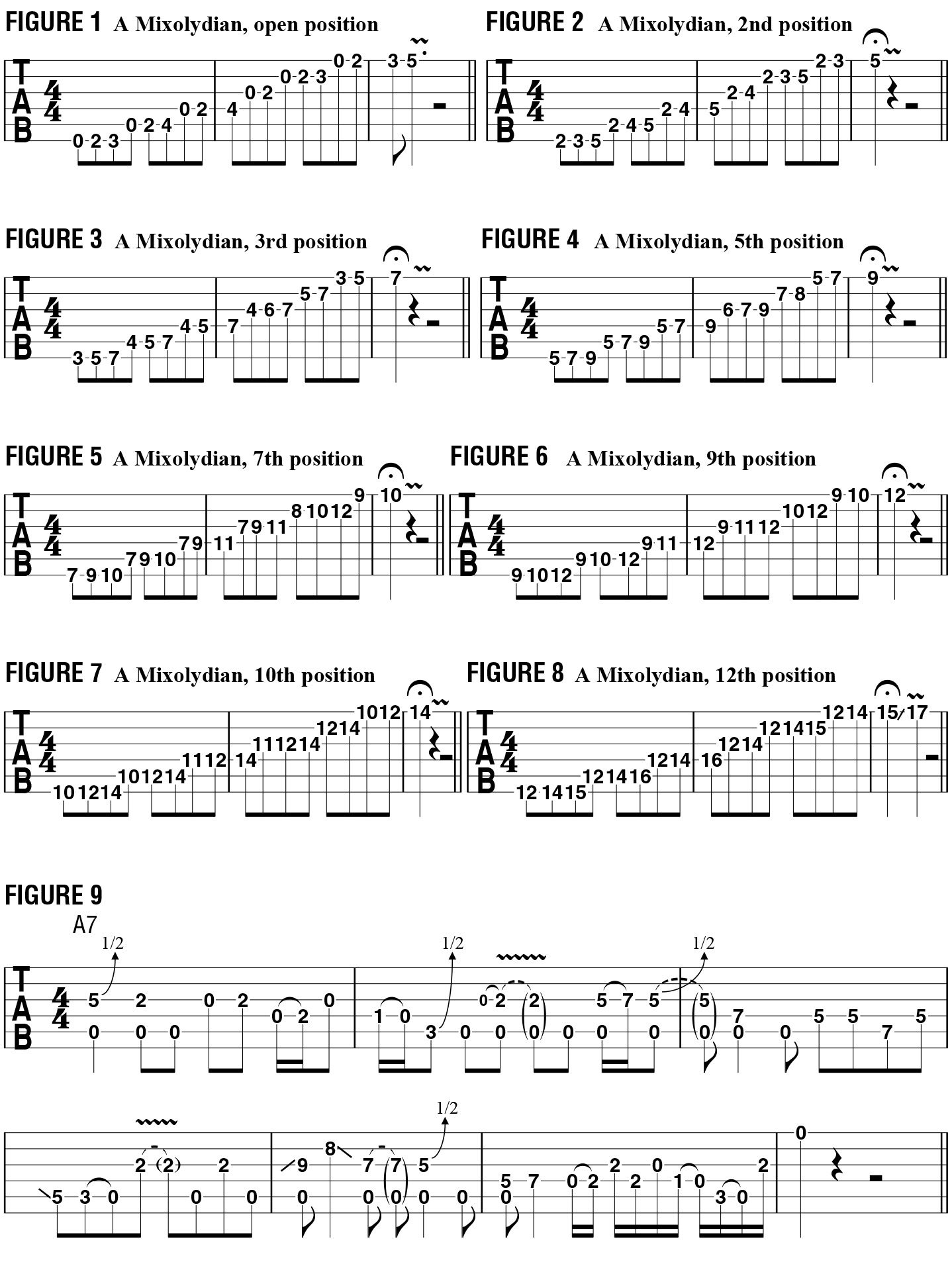More Approaches to Drone-Based Melodic Solo Passages
This month, we’ll continue our examination of methods for improvising melodic solos that incorporate a self-accompanying open drone string. Our approach thus far has entailed using an open string as a root-note drone, providing the tonic—the home-key note, or the “one”—as a harmonic reference point. We’ll now look at using the open A string as the root-note drone, with melodic passages based on the A Mixolydian mode (A B C# D E F# G).
Bear in mind, however, that an open-string drone does not always have to be the root; using another interval, such as the fifth, minor third, fourth or second will provide a variety of sounds, moods and impressions when incorporated into improvised solos, and I encourage you to experiment with these approaches as well.
Let’s first review all of the positions of A Mixolydian moving up the fretboard, starting in first position and progressing through eight different positions, culminating in 12th position with a replication of the first-position form one octave higher.

FIGURE 1 illustrates A Mixolydian in first, or “open,” position, so named for the inclusion of open strings. Notice that we start on the open low E string, the fifth of A. As we progress through each higher position, we will start with the next succeeding scale degree. For example, FIGURE 2 illustrates A Mixolydian in second position, so our starting point is now F#, the major sixth of A, one whole step higher than the open low E note. FIGURE 3 represents A Mixolydian in third position and starts on G, the dominant seventh; FIGURE 4 begins on A, the root note; FIGURE 5 starts on B, the major second, FIGURE 6 starts on C#, the major third; FIGURE 7 begins on D, the fourth; and FIGURE 8 starts on E, the fifth, one octave higher than FIGURE 1. Be sure to memorize each of these modal positions.
The purpose of memorizing each scale position of A Mixolydian is to be able to move freely through them, shifting from one to another and playing up and down individual strings, while performing melodic passages simultaneously with the open-A drone. FIGURE 9 offers an example of keeping the open A string drone going while performing lines that alternate between A Mixolydian in second position, fifth position, seventh position and open position, while limiting these melodic runs to the fifth, fourth and third strings.
Now that you have the idea, try connecting every position of A Mixolydian in an improvised solo while incorporating the open A string drone.
All the latest guitar news, interviews, lessons, reviews, deals and more, direct to your inbox!
Guitar World Associate Editor Andy Aledort is recognized worldwide for his vast contributions to guitar instruction, via his many best-selling instructional DVDs, transcription books and online lessons. Andy is a regular contributor to Guitar World and Truefire, and has toured with Dickey Betts of the Allman Brothers, as well as participating in several Jimi Hendrix Tribute Tours.

